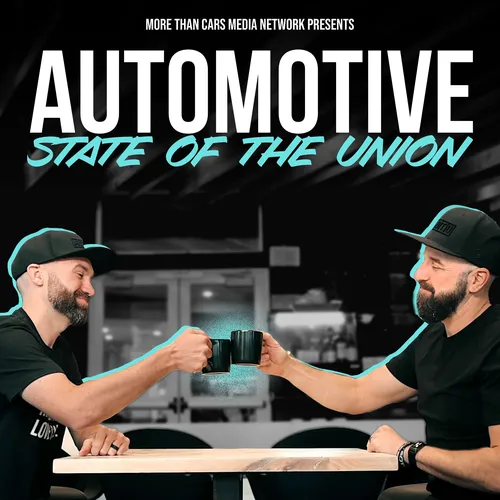EV Tax Credit Extension-ish, Cadillac’s Comeback, Coding Gets Easier and Complicated
- Author
- More Than Cars Media Network
- Published
- Wed 03 Sep 2025
- Episode Link
- None
Episode #1136: An IRS update that could save EV buyers thousands, how Cadillac is quietly staging a luxury comeback and the deeper impact of AI on software development—and whether vibe-coding is helping or hollowing out the craft.
- The IRS has provided a much-needed clarification that gives EV buyers a path to still claim the federal tax credit—even if their vehicle hasn’t been delivered by the September 30th deadline.
- Buyers who sign a binding purchase agreement and make a payment by September 30, 2025, can still claim the $7,500 (new) or $4,000 (used) EV tax credit.
- This clarification resolves confusion around the “placed in service” language, which had been interpreted to mean vehicles had to be delivered before the deadline.
- Deliveries can now happen after the deadline as long as paperwork and payment are completed beforehand.
- Dealers must provide a “time of sale report” within three days of vehicle delivery to support the buyer’s claim.
- The clarification comes as EV demand has surged this summer, with analysts crediting savvy shoppers aiming to lock in the credit before its sunset.
- Cadillac’s electric vehicle momentum is giving the brand a shot at reclaiming its former glory in the luxury segment—this time with plugs instead of prestige grilles.
- Cadillac’s U.S. sales have risen for 12 straight quarters, with EVs making up about a third of sales in the past two months.
- That figure far outpaces both the broader industry (6–8%) and even the luxury segment (14%) for EV market share.
- Most EV buyers are trading in vehicles from Audi, BMW, and Mercedes—brands that have long outshined Cadillac.
- Even Tesla is losing 1 in 10 trade-ins to the American luxury brand.
- “They’re now beyond where we expect the industry to be five years from now,” said J.D. Power’s Tyson Jominy. “Success today does not necessarily mean success tomorrow.”
- As AI-assisted vibe coding tools proliferate, developers are grappling with what gets gained—and lost—when code becomes more suggestion than craftsmanship.
- AI tools now help with everything from debugging to database encryption to entire app scaffolding.
- While helpful, these tools can also produce bloated, disjointed code without strong editorial guidance.
- Critics worry that fluency in core principles is eroding, replaced by reliance on “good enough” automation.
- “It may be the easiest time in history to be a coder,” the author writes, “but it’s perhaps harder than ever to grow into a software engineer.”
0:00 Intro with Kyle Mountsier and Michael Cirillo
1:15 What Kyle and Michael would do with a 2-day work week
2:42 Upcoming ASOTU Edge Webinar with vAuto on Sept 10
3:22 EVs Delivered Post-Sept 30 Can Still Receive Tax Credit
5:59 Cadillac Sales Grow For 12 Straight Quarters
8:25 Vibe Coding Making Coding Easier, But Not Good
Join Paul J Daly and Kyle Mountsier every morning for the Automotive State of the Union podcast as they connect the dots across car dealerships, retail trends, emerging tech like AI, and cultural shifts—bringing clarity, speed, and people-first insight to automotive leaders navigating a rapidly changing industry.
Get the Daily Push Back email at https://www.asotu.com/
JOIN the conversation on LinkedIn at: https://www.linkedin.com/company/asotu/
